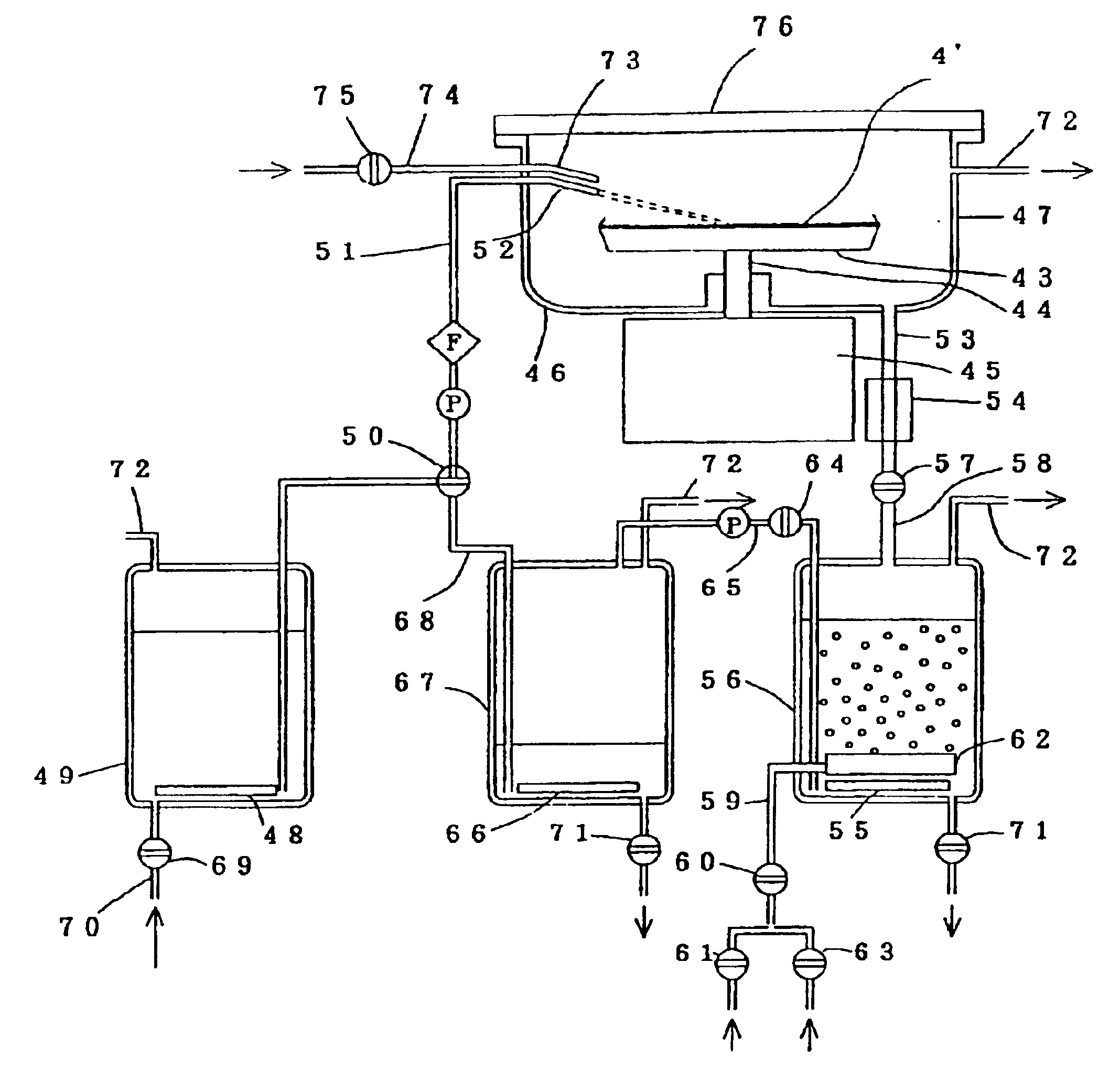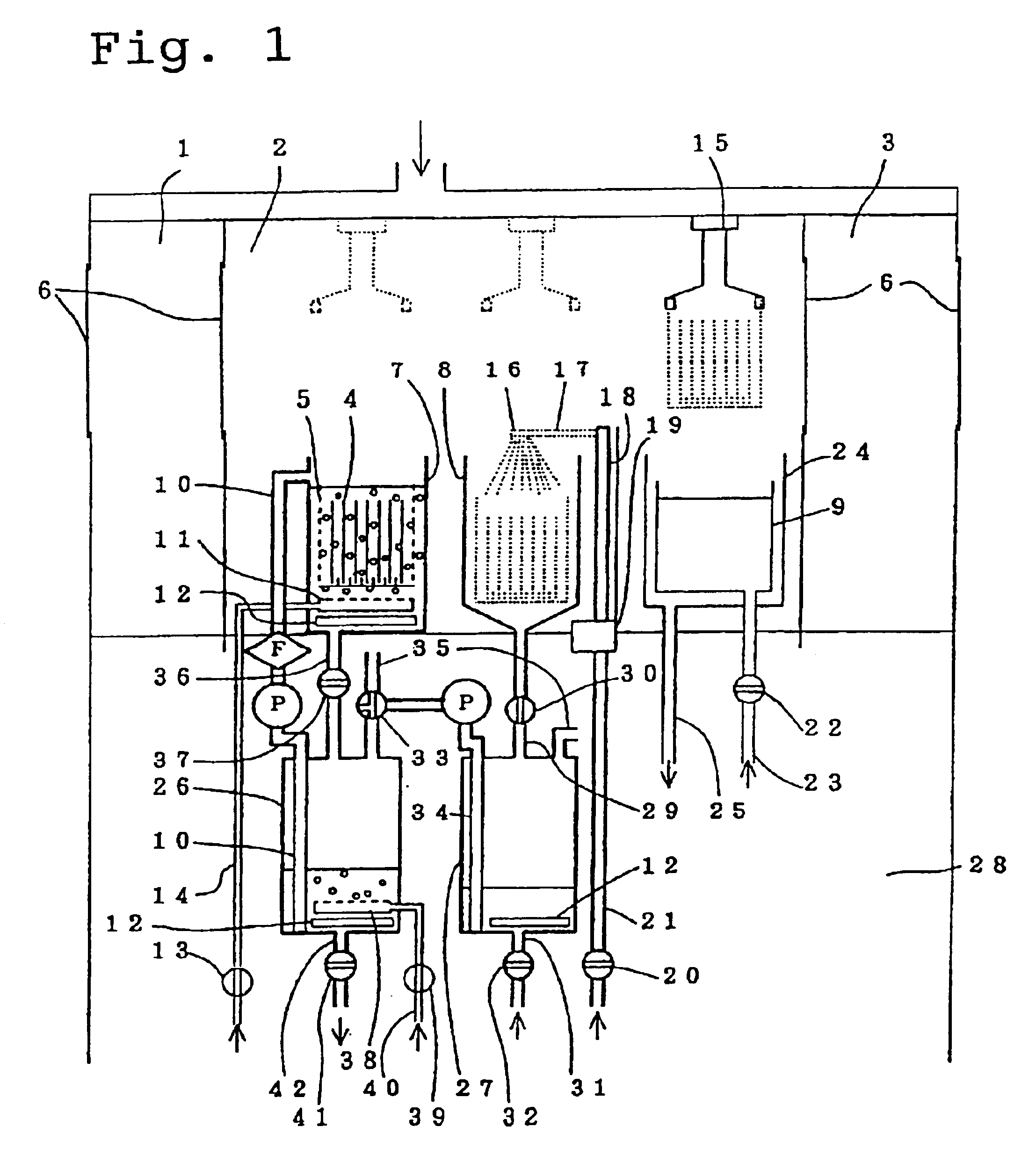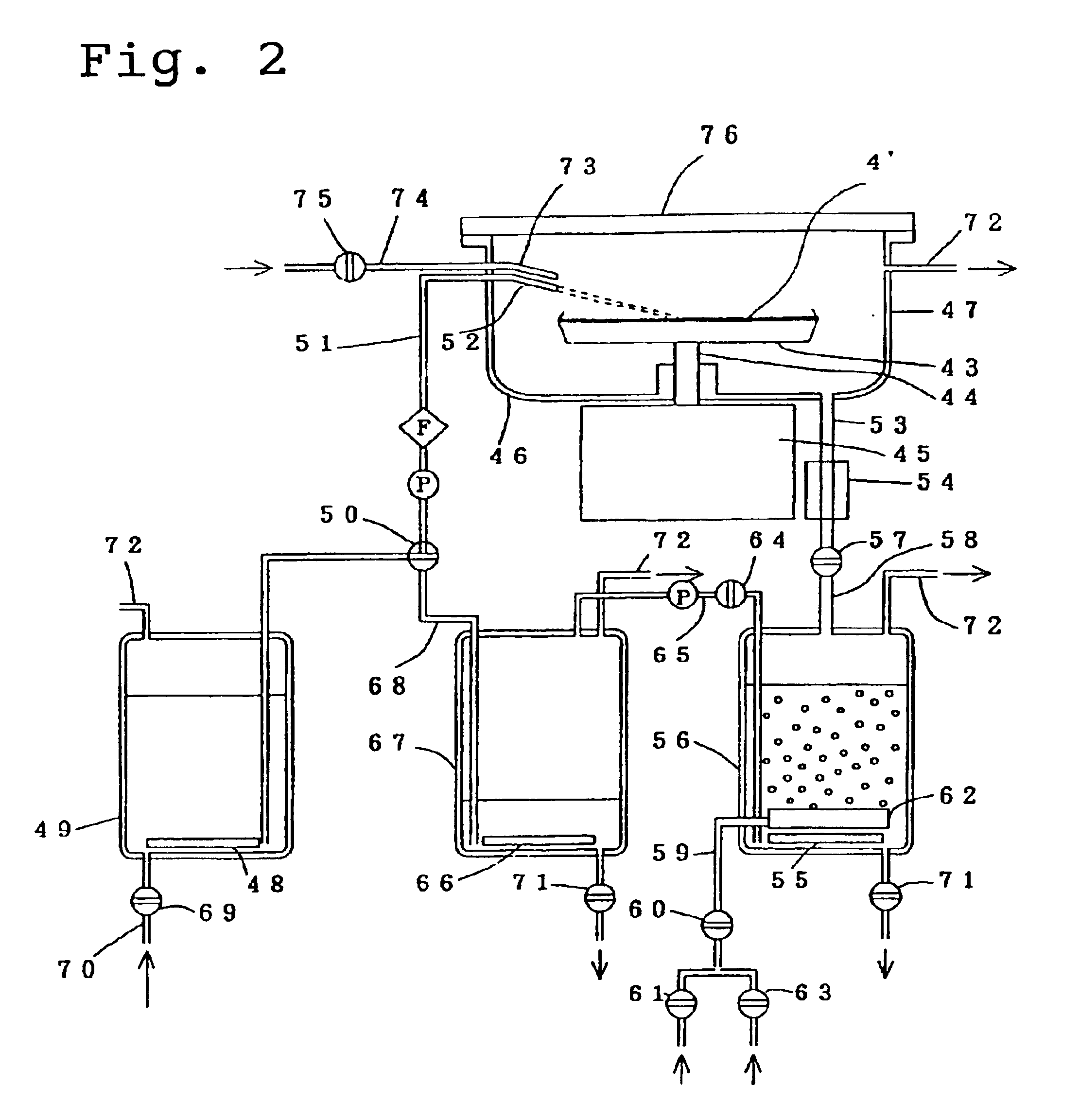Method and apparatus for removing organic films
a technology of organic films and methods, applied in the direction of instruments, cleaning using liquids, photosensitive materials, etc., can solve the problems of large environmental problems, inability to easily remove resist, and damage to the surface of the wafer, and achieve the effect of effective removal and rapid stripping ra
- Summary
- Abstract
- Description
- Claims
- Application Information
AI Technical Summary
Benefits of technology
Problems solved by technology
Method used
Image
Examples
example 1
FIG. 1 shows a schematic illustration of an apparatus in which a cassette containing a plurality of wafers with resist films is immersed in an ozone gas aerated ethylene carbonate molten liquid to remove the resist films.
A draft built for the experiments is divided into a front chamber 1, a treatment chamber 2 into which cleaned air is introduced, and a rear chamber 3. Opening glass doors are provided on all surfaces, although during operation the inside of the draft is isolated from the external atmosphere. The valves described below are all electromagnetic valves, and operation of these valves, a liquid transport pump, and a robot (for transporting the cassette) are all performed from outside the draft.
In order to enable a quartz glass cassette 5 capable of holding 7 six inch wafers 4 to be moved from the front chamber 1 into the treatment chamber 2, which has an exhaust outlet in the rear (not shown in the diagram), and then pass through the rear chamber and be removed from the d...
example 2
As confirmed by the results of the example 1 above, the stripped resist components are decomposed by the ozone, and consequently the treatment liquid used in the resist stripping process should be able to be reused several times. Using the same apparatus described in FIG. 1, the action of the recycling mechanism for the treatment liquid is described below.
Using a cassette capable of holding 7 samples of identical specification to those described in the example 1, the stripping, rinsing and drying processes were performed in the same manner as the example 1.
In the vessel 7, following the raising of the cassette, ozone gas was bubbled through the liquid for a further one minute to decompose the dissolved resist, and the valve 37 was then opened, and all of the liquid in the vessel 7 was transferred to the vessel 26. Subsequently, the valve 39 was opened, and nitrogen gas was bubbled through the liquid. Within one minute, the ozone dissolved in the liquid had been removed, and the liqu...
example 3
Propylene carbonate is a liquid at room temperature, with chemical properties similar to those of ethylene carbonate liquid, and consequently the same apparatus as that described in FIG. 1 was used to investigate the resist stripping and removal action of propylene carbonate.
A single wafer sample of the same specifications as that used in the example 1 was placed in a cassette, and using the same treatment conditions as those described for the single wafer treatment in the example 1, with the exception of replacing the ethylene carbonate with propylene carbonate, and following the same process as the ozone gas aerated sample described in the example 1, the temperature dependency of the stripping performance was investigated. The results are shown in Table 1. In Table 1, the determination of the stripping time required was judged by naked eye observation, and the figures for stripping rate were then calculated from these times.
The ozone concentration of a liquid is typically determin...
PUM
| Property | Measurement | Unit |
|---|---|---|
| Percent by mass | aaaaa | aaaaa |
| Temperature | aaaaa | aaaaa |
| Temperature | aaaaa | aaaaa |
Abstract
Description
Claims
Application Information
 Login to View More
Login to View More - R&D
- Intellectual Property
- Life Sciences
- Materials
- Tech Scout
- Unparalleled Data Quality
- Higher Quality Content
- 60% Fewer Hallucinations
Browse by: Latest US Patents, China's latest patents, Technical Efficacy Thesaurus, Application Domain, Technology Topic, Popular Technical Reports.
© 2025 PatSnap. All rights reserved.Legal|Privacy policy|Modern Slavery Act Transparency Statement|Sitemap|About US| Contact US: help@patsnap.com



